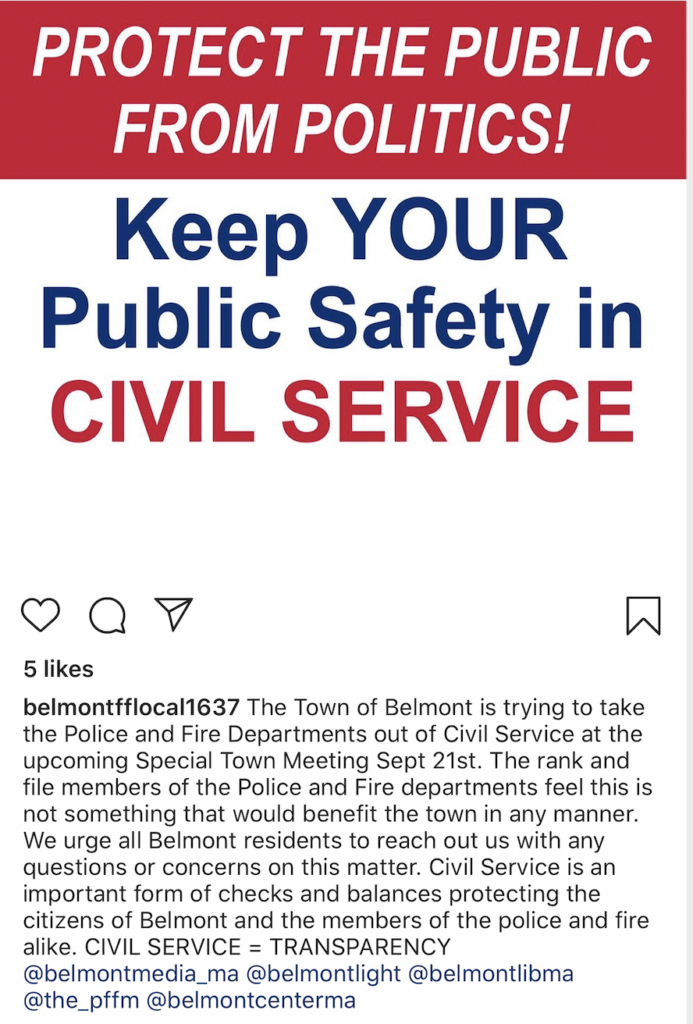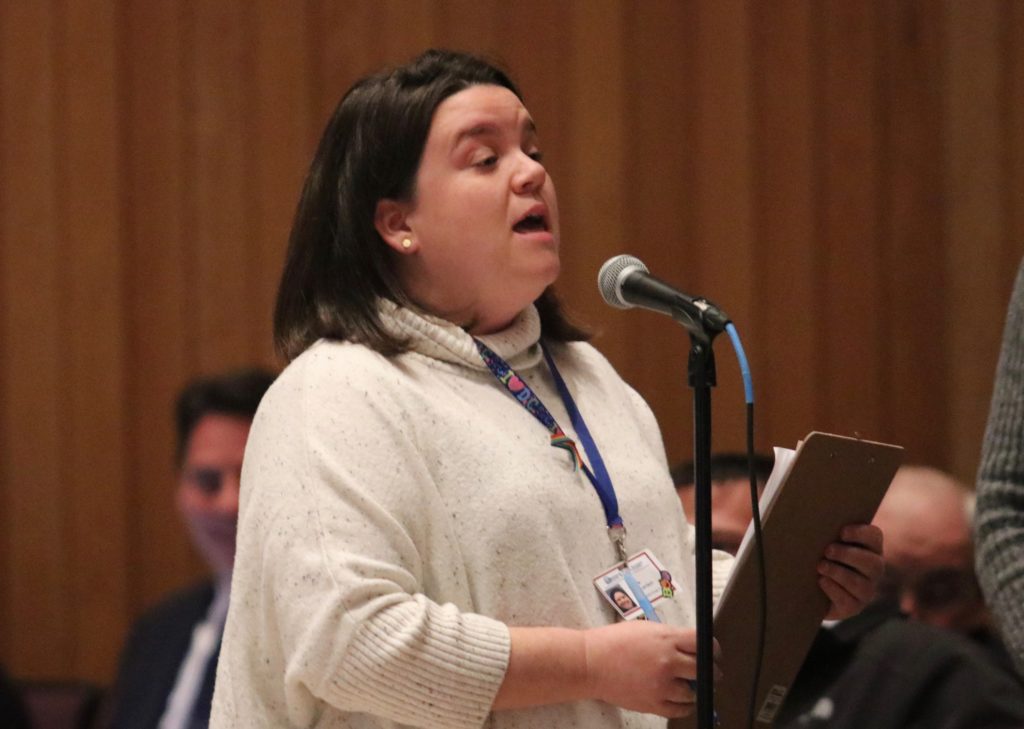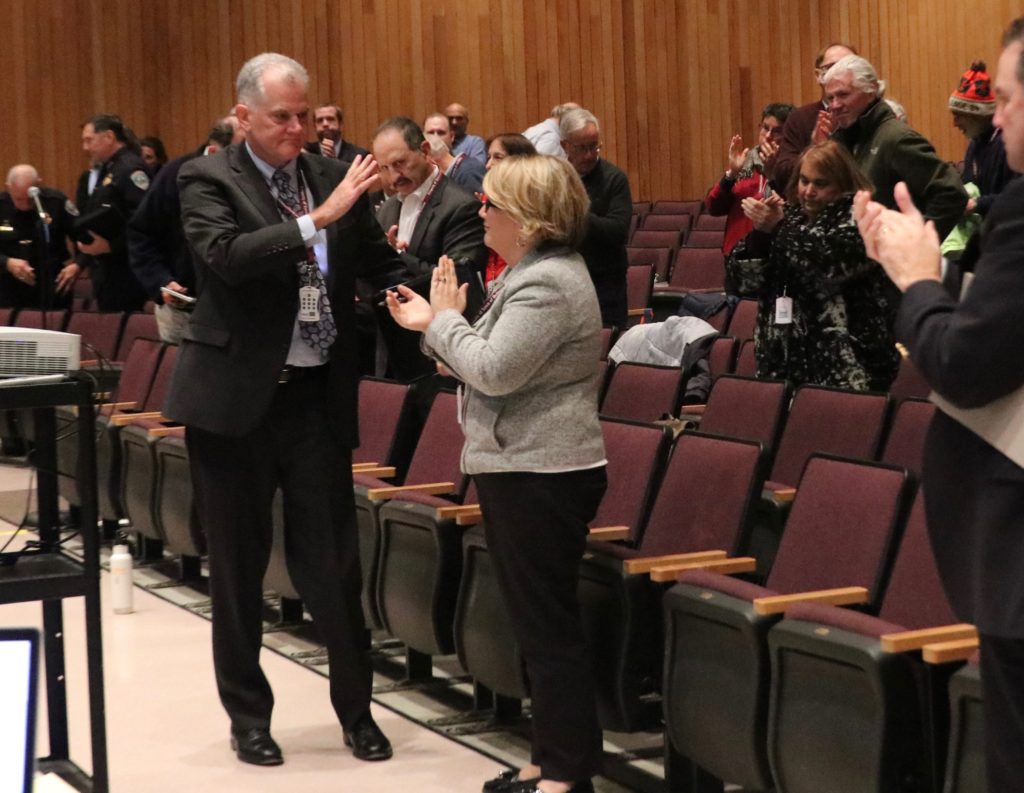Photo: Roy Epstein, Chair of the Select Board
In a surprise that no one saw coming, the Belmont Select Board voted unanimously to withdraw its controversial article removing civil service for Belmont’s Police and Fire departments mere minutes before it was to be presented before a contentious Special Town Meeting on Wednesday, Sept. 23.
Roy Epstein, Select Board chair, told the members the reason for the removal of the article was due to a “technical error” involving rank and file members taking civil service tests for promotions in the coming months.
“I think this sort of last minute change is one that forces our hand in this case. And I would say a postponement at this stage is certainly the prudent approach,” said Tom Caputo of the Select Board.
Because the article was never read into the warrant, there would be no debate and discussion by the Town Meeting members so Town Moderator Mike Widmer quickly dissolved the assembly as the article was the final item on the warrant.
The withdrawal of Article 10 removed what many predicted to be a heated debate on the future of civil service in Belmont.
Supporters of ending civil service, which included town officials, Select Board and the leaders of both fire and police, contend the town would see significant cost savings by ending a 105-year-old arcane system for hiring and promotions, replacing it with an efficiently run locally-focused practice.
Opponents made up of the rank and file of Belmont Fire and Police and resident supporters ask why throw out the baby with the bathwater as changes to civil service – such as altering age limits and increasing diversity in the number of candidates – can be made by changes to the existing language of the agreement. Several Town Meeting Members also questioned the validity of the supposed financial savings with such a move.
Paul Roberts (Pct. 8), a vocal critic of the town’s and Select Board’s tactics said Wednesday night’s board vote had more to do with folding from a losing position.
“My belief is that [the Select Board] did some hasty vote counting and decided to turn back and live to fight another day. Overall, I think it reflects a haphazard effort all around on Article 10,” he said.
During a meeting of the Select Board that occurred during a break after the Special Town Meeting approved Article 9, Epstein said the board was informed late in the afternoon that Article 10 included a “drafting error” which involved setting the effect date of March 1, 2021 to end civil service protection. It was also assumed this date would protect the interests of police and fire department personnel who were taking civil service promotional exams this fall.
“And we wanted them to have full civil service protection in their new position. And that was always our intent,” said Epstein.
But when the article was reviewed, it was determined that March 1 “was not sufficient,” said Epstein. Because the results of the civil service exams could take longer than previously thought, the board was advised that July 1, 2021 was a more appropriate date to protect any future promotions.
“The idea was not to cause a problem for anyone or to be unfair to anyone who was studying for an exam and then pull the rug from under them by yanking civil service before they had a chance to actually take the test and get the results,” said the Select Board’s Adam Dash.
With the new effective date for leaving civil service being pushed back well passed the scheduled date for the annual Town Meeting in early May 2021, the board decided to allow the members to vote on the article in the coming year.
“Patrice [Garvin, the town administrator] and I recognized if it’s going to be as late as July 1, 2021, we may as well withdraw this article tonight and then we’ll see where we’re at in the spring regarding civil service,” said Epstein.
“We don’t want to do something that did not reflect our true intention. And at this late date there was no cure that other than to withdraw the article,” he said.
Roberts provided his own advice to the those supporting the end of Civil Service in Belmont.
“It is my hope that the Select Board use this extra time to properly study the issue, learn from the experience of other communities and – if they intend to bring this forward again – do so with a plan that addresses the issues raised by our public safety professionals and Town Meeting members. A Town Meeting vote should be the last step in the process, not the first,” said Roberts.


